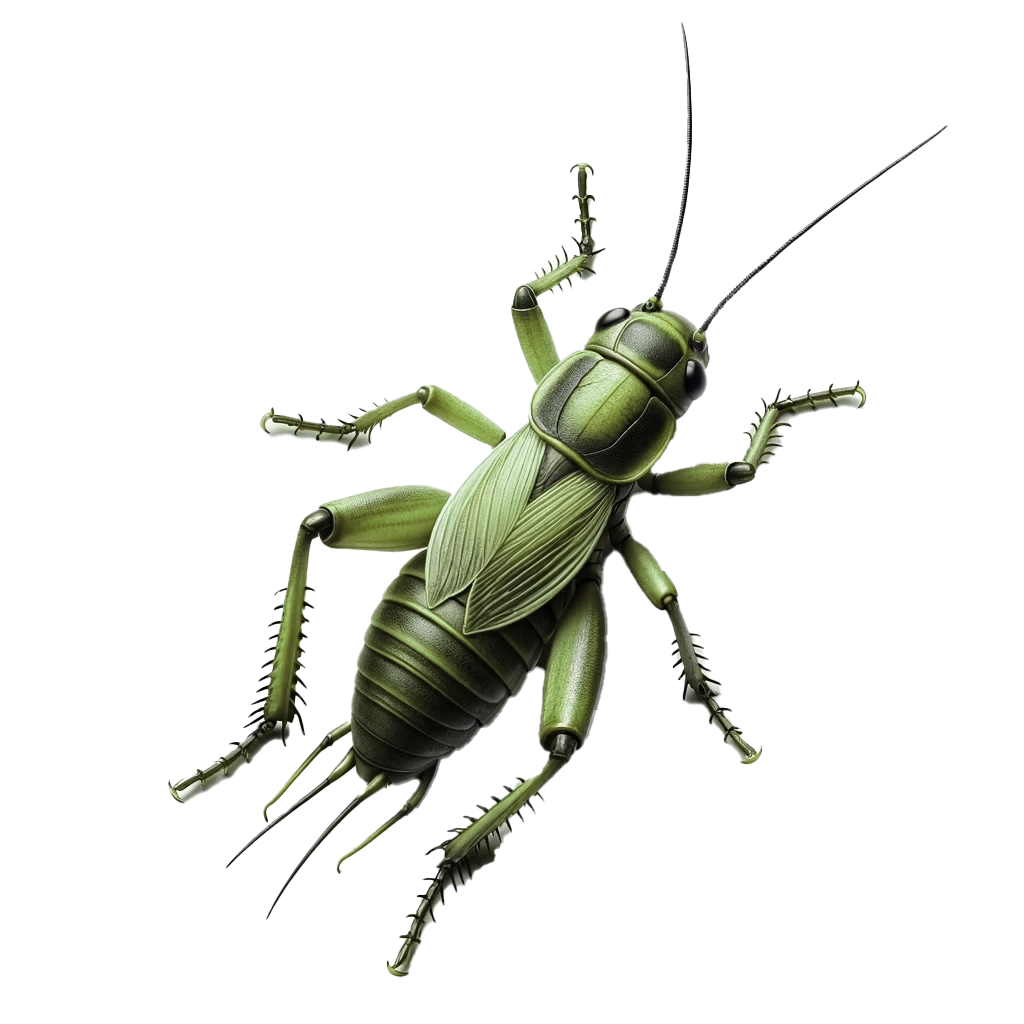Centipedes
Centipedes have long, segmented, worm-like bodies that are yellow to dark brown in color. Each body segment has its own pair of legs. The first pairs of legs end in sharp claws that contain venom. They use these claws to capture and paralyze their prey.
Millipedes
Millipedes come in a variety of colors, including black, dark brown, red, and orange. Many also have mottled patterns on their bodies. Most millipede species have between thirty and ninety legs.
Crickets
Crickets are common household invaders. Crickets are yellowish-brown, brown, or mottled in color, and may have banding on their bodies. They have powerful hind legs that they use for jumping. Depending on the species, they may or may not chirp.
Earwigs
Earwigs have long, smooth bodies that are dark brown or reddish-brown in color. Extending off of their abdomen is a pair of pincer-like appendages (cerci). The cerci are what give these insects their other common name – “pincher bugs.”
Are occasional invaders dangerous?
Occasional invaders are not dangerous, and are typically thought of as nuisance pests. They enter homes in large numbers, and can be difficult to control and eliminate. It is important to note that, while rare, centipedes do have the potential to deliver painful bites if they are being directly handled. However, their venom is not strong enough to cause any serious issues for people. Earwigs look more dangerous than they are. Their pincers are not strong enough to cause any harm to people. In addition, crickets can cause some damage to upholstery, clothing, and other fabrics by chewing through them.
Why do I have an occasional invader problem?
Occasional invaders move inside to take advantage of a temperature-controlled, warm environment. They move inside through cracks in the foundation and exterior walls of homes and buildings, through gaps around windows and doors, and through spaces around utilities and vents leading indoors through exterior walls.
Where will I find occasional invaders?
Occasional invaders live or hide out in dark, damp places, such as under mulch and landscaping ties, under rocks, and in landscaped areas. When they move inside, they take up residence in humid, dark, hard-to-reach areas of homes, making them difficult to eliminate. Attics, walls voids, crawl spaces, basements, bathrooms, and laundry rooms can all become home to occasional invaders.
How do I get rid of occasional invaders?
The best solution to an occasional pest infestation is a proactive, professional solution. At Pest Control Consultants, our certified service technicians provide outstanding St. Charles pest control solutions to eliminate your current pest problems, and prevent future problems with pests.
The experts at Pest Control Consultants are dedicated to using the latest scientific techniques and up-to-date products, practices, and procedures to get rid of and control occasional pests and other household-invading pests. To learn more about St. Charles home exterminator services and commercial pest management programs, or to schedule a free inspection, call PCC.
How can I prevent occasional invaders In the future?
Keeping occasional invading pests off your Northern Illinois, Eastern Iowa, or Central Wisconsin property and out of your home can be difficult.
There are a few things you can do to help deter them:
- Caulk cracks and crevices in the foundation and exterior walls of your home.
- Make sure all screens are intact.
- Place caps on chimneys.
- Seal spaces around utilities, wires, and cables that enter your home from its exterior.
- Place mesh caps over the end of gutter spouts and over vents.
- Repair spaces found along the roofline, at roof intersections, and repair broken shingles.
- Place weather stripping around windows and doors.
- Install dehumidifiers in the basement and use air-conditioners.
- Make sure that crawl spaces are well ventilated, and place ventilation fans in kitchen and bathrooms.
- Maintain gutters.
- Trim overgrown shrubs and bushes away from the exterior of your home to help the sun hit the soil and keep it dry.
